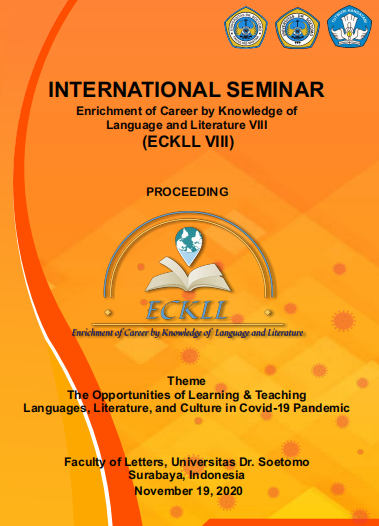The Use of ―Ataru‖ and ―Ateru‖ in Modern Era
 Abstract views: 356
,
Abstract views: 356
,
 PDF downloads: 181
PDF downloads: 181
Abstract
The use of vocabulary in any language often creates inaccuracy, especially in meaning. This phenomenon is often felt by foreign learners of a language, sometimes even experienced by native speakers of that language. This article contained a study regarding the use of two of the many verbs in Japanese, namely Ateru and Ateru, which have similar meanings that often make it difficult for Japanese learners and teachers to understand and use them. This study aimed to help understand the behavior of these two words well. As the results of this study, it is hoped that both Japanese language teachers and learners can use it as an additional reference. The data used were taken from the online version of the Asahi Shinbun newspaper. The method used was a qualitative descriptive method in accordance with the objectives of the study which attempted to describe the symptoms of data based on their use as they are. This research used lexical and grammatical meaning theory in the analysis process to get to the conclusion. The lexical meanings of the two words were taken from the main dictionary of the Daijirin with additional references to various Kokugo Jiten dictionaries from different publishers, such as Benesse Dokkai Hyogen Kokugo Jiten, Meikyo Kokugo
Jiten, Shinmeikai Kokugo Jiten, and Shogakukan Nihongo Shinjiten, in order to provide a deeper picture of meaning comprehensively. The behavior in the use of the two verbs was also analyzed using Kihon Doshi Yoho Jiten as the basic reference. Then the use of these two verbs was grammatically defined by taking into account their use in various sentences of data. In conclusion, there were various situations in which the two verbs were used grammatically according to their lexical meaning. From the point of view of attachment to the object, these two verbs also had the same position in some cases.







